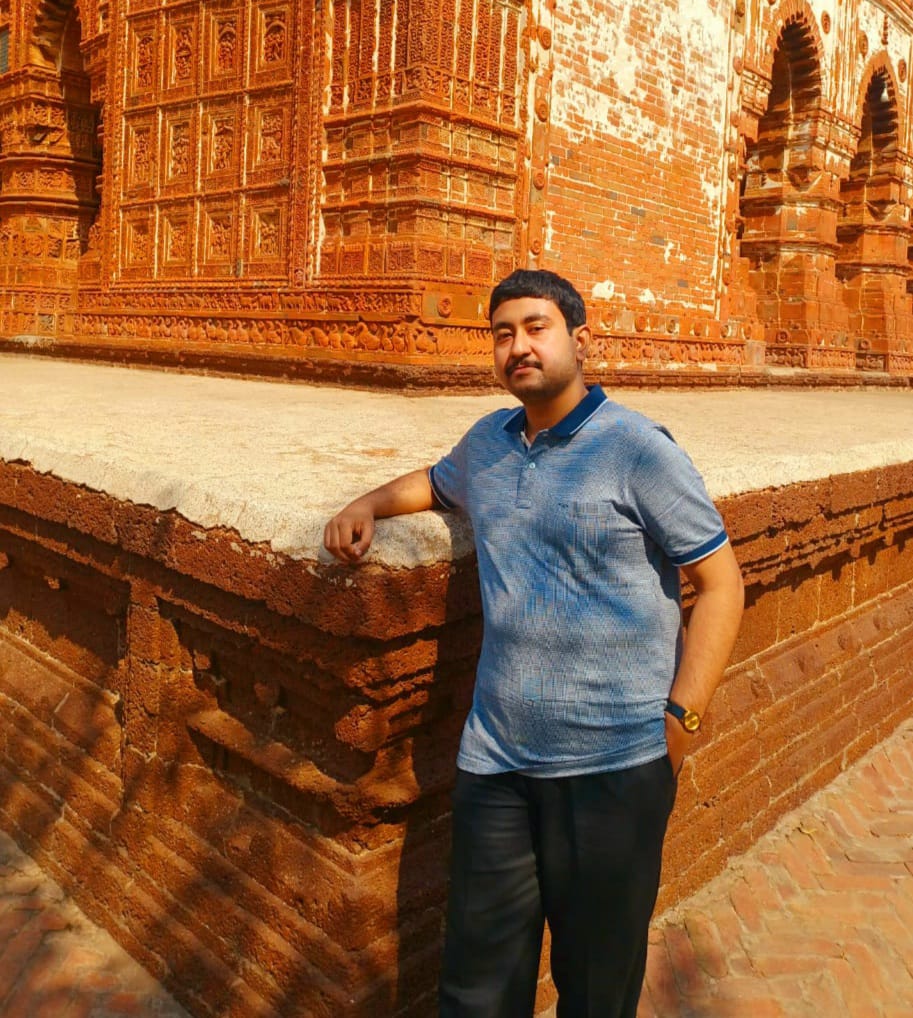The rich and diverse cultural history of Prakriti worship of Bengal has always been a subject of immense interest for scholars and historians. Among the various facets of this history, the evolution of religious practices stands out as particularly significant. This article delves into the intricate evolution of Prakriti Worship in Bengal, tracing its roots back to the Gangarid civilization and the archeological site of Panduraja Dhibi. Through a comparative analysis of ancient idols and practices, we uncover the profound transformations in Bengali religion from its origins in Prakriti worship to the complex, esoteric traditions of later Tantraism.
Sovereignty of Prakriti and Adimatrika
One of the most striking characteristics of early Bengali religious practice is the sovereignty of Prakriti, or the primordial Mother Goddess, Adimatrika. In these early depictions, masculinity is often represented as subordinate, lying at the feet or in the lap of the goddess, suggesting a passive, devoted role. This clear hint indicates that the concept of a Supreme Father or a Supreme God was not prevalent alongside the worship of the primordial mother in Bengal. Instead, the male figure is often depicted as a silent, passive devotee, highlighting the matriarchal nature of early Bengali spirituality.
Companions of the Original Mother
The presence of two or four companions with the original mother goddess is another significant aspect of early Bengali worship. These companions are the three or five original visionaries of Tantra physiology, representing the three primary pulses of Ida, Pingala, and Sushumna. These pulses manifest as three goddesses, with the central goddess, Kulkundalini, located on the Sushumnapatha. The other two goddesses symbolize the upward and downward inductive motions, further emphasizing the integral role of these energies in early Tantric practice.
The Importance of Birds
Birds hold a special significance in early Bengali religious imagery, particularly in the idols from sites like Panduraja’s Mound, Chandraketugarh, and Bangarh. The goddess Pakhimatrika, depicted with a bird’s face and a human body, symbolizes maternal love and eternal motherhood. The elevated nipples and open vagina in these images represent the nurturing and life-giving aspects of the goddess. This bird motif is recurrent in various Tantras and Puranas, indicating a deep-rooted symbolic connection between birds and divine femininity.
Notably, in the Tantric and Yogic traditions, the Ajapa Hansa (a mystical swan) is situated below the Niralambakshetra of Sahasrara, inspired by the imagination of the bird-faced goddess. The name of Baglamukhi, one of the Dasamahavidyas, is also possibly derived from this bird symbolism. Even in an eighteenth-century image of Kali Puja in Calcutta, the figure of Sapta Matrika includes a goddess with a bird-like face, further underscoring the enduring significance of bird imagery in Bengali spirituality.
Animal and Plant Symbolism
The early Bengali imagination extended beyond birds to various animals and plants. Specific animals like fish, vultures, owls, monkeys, ducks, and foxes, as well as mythical creatures like the bird king horse, played a significant role in their symbolic language. For instance, the phrase “Sun becomes water or fox gets married,” used to describe a rare combination of sun and rain, can be interpreted as a metaphor for the eternal form of Jyoti Paramatattva and the Sudharup of Mahasukh.
Trees, particularly those with straight trunks like Shal, Ashwattha, and Tal, were also venerated in early Tantra. The story of the demon Bhomra’s death on three palm trees and the well-known Shalvanjika idols in Bengali temples reflect the symbolic importance of these trees. The nine plants—Bilva, Ashoka, Jayanti, Kadali, Darimba, Dhanya, Haridra, Maan, and Kachu—each represent different deities, linking Ayurvedic knowledge with Prakriti worship.
The Influence of Buddhism
The integration of Buddhism into Bengali religious practice marks a significant turning point in the region’s spiritual evolution. The adoption of Buddhism by the mother-worshipping Bengalis can be attributed to several factors, including political foresight and philosophical alignment. During the reign of the Magadha Empire, the Gangaridai tribe of South Bengal likely faced pressure from Ashoka’s expansionist policies. As a result, they adopted Stavirayana Buddhism to some extent, although the Buddhist view was relatively closer to the Bengali psyche compared to Vedic traditions.
Buddha’s teachings, deeply influenced by Kapil’s Samkhyam philosophy, resonated with the Bengalis. The placement of Buddha statues under large trees or between two trees reflects the enduring veneration of nature in Bengali spirituality. Even as Buddhism spread, the matriarchal influence persisted, as evidenced by the presence of nine women in Vandanarata postures in Buddha images, with no male figures present. This suggests that Tantric women or Tantra Matri Sadhana cults played a significant role in the religious landscape of the time.
The Persistence of Matri Sadhana
Despite the political and religious changes brought about by Buddhism and later influences, the core practice of Matri Sadhana remained intact in Bengal. The depiction of the Buddha under a tree with nine women paying homage, and the enigmatic presence of a woman behind the tree, indicates the subtle yet persistent matriarchal undertones in Bengali spirituality. This imagery symbolizes the ecstasy of nature and the mysterious laughter of the nature-worshipping Bengali, highlighting the continuous reverence for the primordial mother goddess.
Revival of Aditantra in Pala Yuga
The Pala period witnessed a revival of Aditantra spirit through the worship of goddesses like Mansa, Charchika, and Chunda. These goddesses, often depicted within trees, signify the synthesis of Purush and Prakriti. This era saw the blending of Shaiva Tantra with Mahayana Buddhism, giving rise to Tantra-influenced Vajrayana and Sahayana practices. This synthesis reaffirmed the ancient connection between nature worship and complex Tantric rituals.
Conclusion
The evolution of Tantraism in Bengal, as traced through the ancient figures of the Gangaridai civilization and the site of Panduraja Dhibi, reveals a fascinating journey from primal nature worship to sophisticated esoteric practices. The sovereignty of Prakriti, the symbolism of birds and animals, the integration of Buddhist elements, and the enduring practice of Matri Sadhana collectively underscore the unique and complex spiritual heritage of Bengal. This heritage, deeply rooted in the worship of the primordial mother and the veneration of nature, continues to influence and inspire Bengali spirituality to this day.
Article Source: Shoptodina






